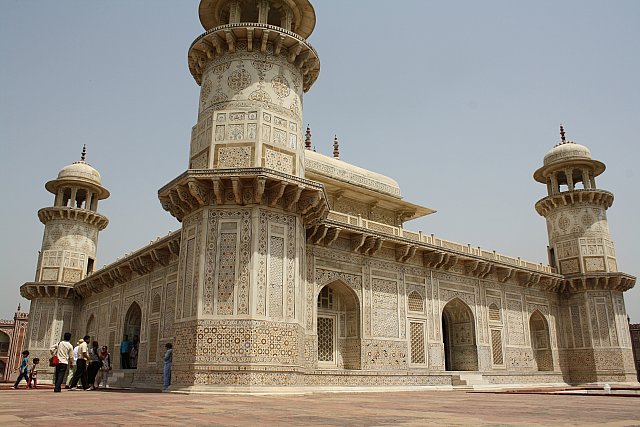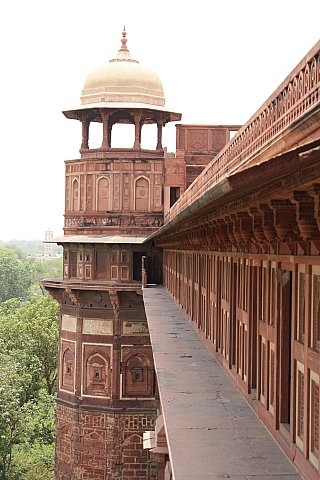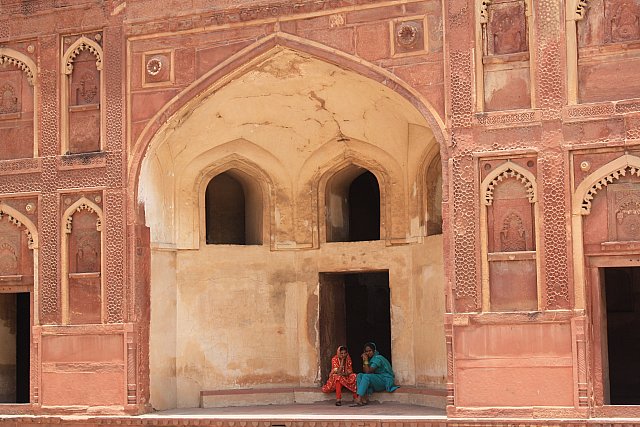
How can a building stay snow white for centuries? By using some of India’s stain-free white marble. This is how the Tomb of Itmad-ud-Daulah in Agra still looks new after almost 400 years. The use of white marble, carved stone screens and colorful wall designs illustrate how this Mughal mausoleum was the precursor to the Taj Mahal. Sometimes compared to an elaborate wedding cake, the decadent building was constructed by one of the few females in charge of the Mughal empire: Nur Jahan for her father after his death.
Walking around the tomb’s sandstone gate, I noticed a monkey crawling along the top of the gate in a hurry. I hustled after to try and get a picture and found not one but about 15 monkeys taking advantage of the shade of a stone canopy. I couldn’t get over my good fortune as I watched the monkeys regard me with little concern as I snapped photos.
Nearby, the Agra Fort goes all the way back to Akbar the Great in 1565. It was different from any fort I had seen before, since it was not only for defensive purposes, but also the residence of the emperors. After our guide described the history and daily life at the fort, I wandered through room after room of elaborately designed red sandstone before realizing that if I wasn’t careful, I would soon be lost.
Part of the fun of touring these ancient structures is also the people watching, since Indians have keep their local style of dress for centuries. The local women embrace vibrantly colored saris that jumped out at me, making me wondering what magic detergent they were using.
Fortunately, many of the locals are as curious of you as you are of them. Several came up to me asking to take a picture with me, since some of the Indian tourists to these sites are from rural India where Westerners are scarce. My face will now be captured forever in several Indian tourists’ photo albums.


The Agra Fort

Some Indian tourists resting at the Agra Fort









